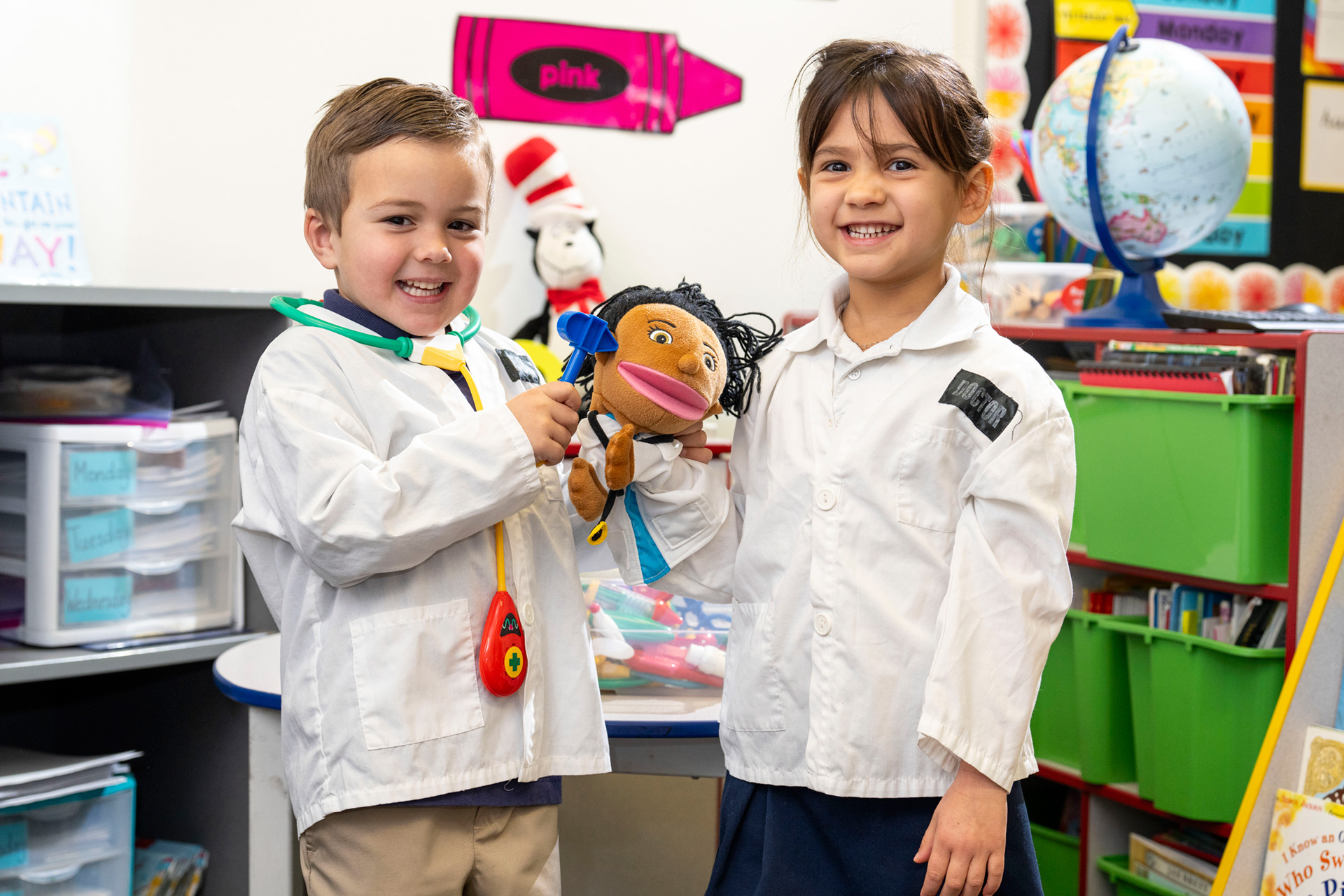The program emphasizes reading readiness instruction in matching, labeling (naming letters and sounds), classification, sequencing (picture story), and symbolic ability. Students develop the phonetic approach to reading by learning to isolate and blend the beginning, middle, and ending sounds of words, and to identify rhyming sounds. In addition, students will strengthen their reading ability through exposure to a list of basic sight words. They are also introduced to a broad, balanced-literacy approach to early learning that reaches into all areas of the curriculum and will ultimately foster an appreciation of good literature. Comprehension includes understanding special relationships and opposites, recalling the main idea, details, outcome, cause-and-effect relationships, and distinguishing reality from fantasy in stories and pictures.
In mathematics, the children learn to match (one-to-one), model and count to fifty and beyond, recognize and write numerals, and understand their values. Sequence and use of ordinal numbers are also taught. Geometric shapes (two and three dimensional), weights and measurements, coin identification, graphing, beginning addition and subtraction, and time concepts are also introduced.
Motor skills are emphasized from gross motor skills in physical activities such as running, skipping, hopping, and throwing, to the fine motor skills of controlling a pencil, crayon, and scissors. The children have a variety of planned activities in learning centers that use different art skills including tracing, coloring, cutting, and painting. These activities offer the opportunity for creativity while refining the child’s eye-hand coordination and fine motor skills.
The classroom is equipped with current educational technology, such as a SmartBoard and several computers for enrichment, reinforcements, and remediation. Children are given opportunities to navigate educational websites and programs independently.
Social and emotional development requires a respectful and positive attitude toward oneself and others. Emphasis is placed on developing listening skills which helps create a learning environment for individual direction and group cooperation.
Children are introduced to enrichment specials including Spanish, music, art, and physical education. Children attend weekly story time in our library.


